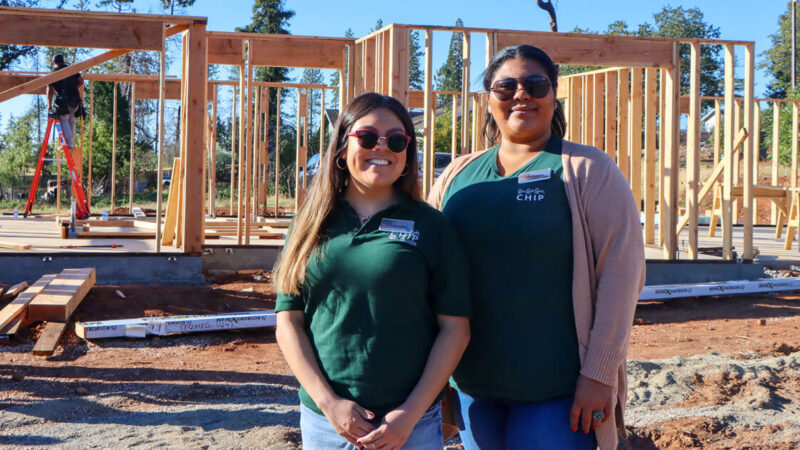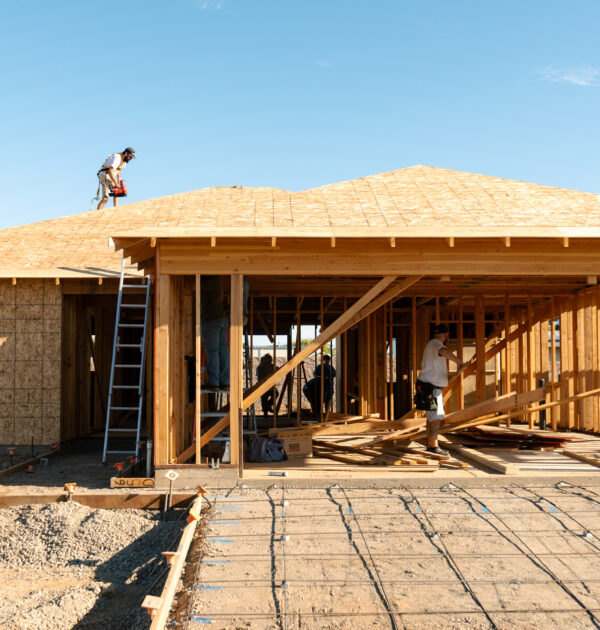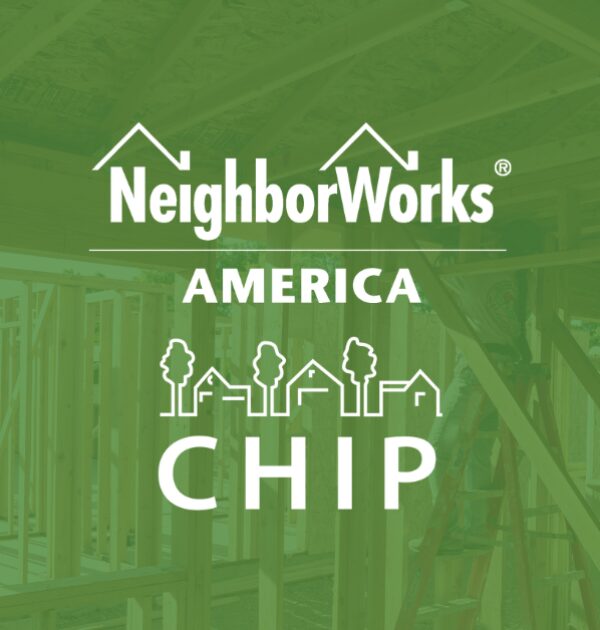
Meet CHIP Staffers Who Grew Up in CHIP homes
On a brilliant day in mid-2021, Cristina Calva witnessed an epic event: a celebration of the 2,000th home completed through a do-it-yourself program that enables people to build their own houses in Northern California.
For Calva, the ceremony in Corning, Tehama County, had personal significance.
As fundraising and communications coordinator for the Community Housing Improvement Program, or CHIP, the nonprofit catalyst for the much-needed dwellings, she organized the ceremony. She also spent most of her childhood in one of those 2,000 homes, a residence built by her parents in Glenn County when she was a toddler.
Along with gratitude, Calva experienced a sense of honor at the historic fete.
“I felt proud to be part of CHIP’s story, both as someone who grew up in a CHIP home and now as an employee,” she says.
For 50 years, CHIP has made it possible for thousands of local families to move into CHIP rental properties or self-built homes in Butte, Glenn, Tehama, Shasta, Sutter, Yuba and Colusa counties. Like Calva, several other CHIP workers were raised in CHIP homes, giving them special insights into the agency’s functions.
“CHIP is a great company to work for,” says Erika Ramirez, who spent the first half of her life in her parents’ CHIP home in Glenn County.
Hired in 2015, Ramirez is a CHIP resident manager in Yuba County.
CHIP residents, she says, come from all walks of life.
“As a CHIP employee, I’ve helped families who were running away from domestic violence,” Ramirez says. She also has aided the homeless, single parents raising young children, seniors on limited income, and many others.
“CHIP residents are great people,” says Ramirez.
Ramirez’ parents—her father was then a farm laborer, her mother an in-home caregiver—were renters with five children when they joined CHIP’s build-a-home program in 1984. Then as now, the program did not require down payments. Instead, it demanded “sweat equity,” with the couple working a combined 30 hours a week until the home’s completion in Hamilton City, with the help of friends and CHIP craftspeople
Construction was financed with a low-interest loan from the U.S. Department of Agriculture, a loan similar to what other CHIP homebuyers receive.
The four-bedroom, two-bath home with a garage and a spacious backyard took seven months to complete. The family would later have four more children, including Erika.
“It’s the only home my parents have had (that we all lived in together),” Ramirez says. “They still own it.”
The Calvas built their home circa 1997, not far from other relatives. Previously, Cristina’s father, Roberto, had assembled mobile homes in Chico. His wife, Raquel, had held various jobs. They and their two children lived in the CHIP home until 2010, when the Calvas purchased a larger home. Today, Raquel Calva is a 15-year CHIP employee, a self-help loan packager, in the agency’s headquarters, helping families apply for USDA construction loans.
Speaking from experience, Raquel stresses that home building requires commitment. Nevertheless, she tells loan applicants: If she could build a home, so can they.
Raquel joined daughter Cristina at the ceremony for the 2,000th CHIP home, an inspirational milestone for all 65 CHIP employees.
“It was very special,” Raquel Calva, 60, says.
Photo by Ray Laager.





